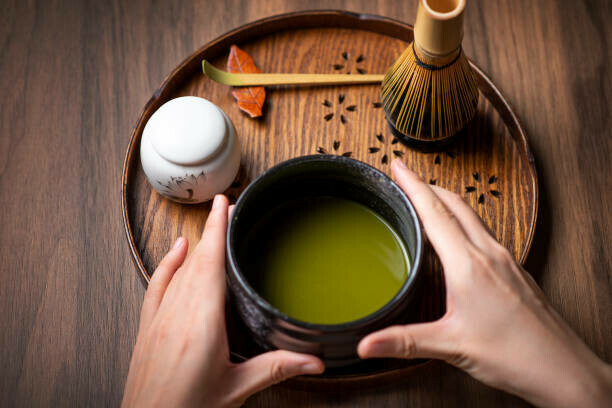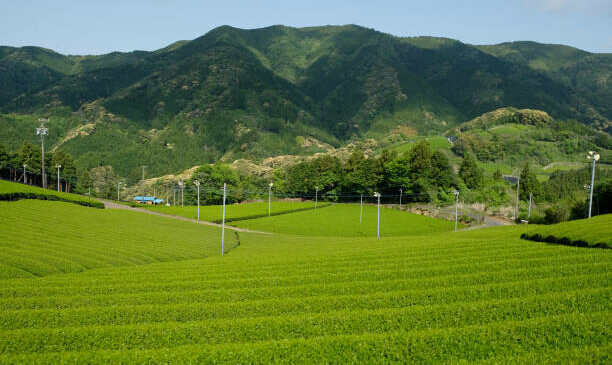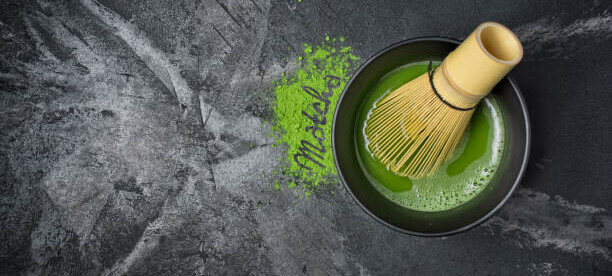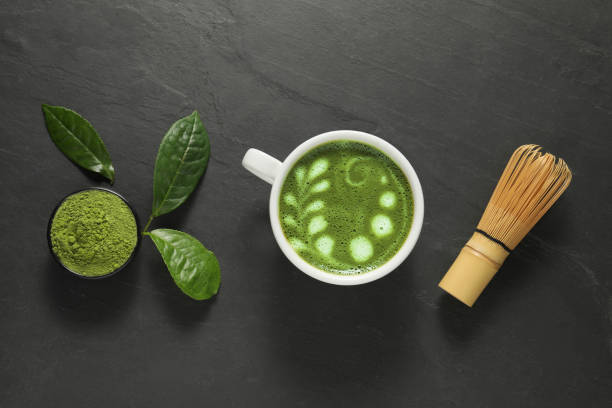Introduction to Matcha – A Green Treasure
Today, I’d like to talk to you about “7 Things You Need To Know Before Buying Matcha Green Tea”. Welcome to the beautiful world of Matcha! This vibrant green powder has captivated hearts and taste buds around the globe. With its unique taste and aroma, Matcha is more than just a drink. It’s a lifestyle, a ritual, and a symbol of health.
Brief History and Cultural Significance of Matcha Green Tea
The origins of Matcha can be traced back to China’s Tang Dynasty (618-907 AD), where it was initially used as a medicinal herb. However, in Japan, during the Heian period (794-1185 AD), Matcha truly flourished. Japanese monks brought tea seeds from China and cultivated them in their homeland. The tea ceremony, known as” “Chano”u,” became a spiritual practice with Matcha at its heart. This ceremony symbolizes purity, tranquility, and harmony, deeply ingrained in Japanese culture.
The Rise in Popularity and Trends in Matcha Consumption
In the 21st century, Matcha has become incredibly popular worldwide. It’s hard to miss whether you’re at a traditional tea ceremony or a modern cafe. Its fame isn’t just because of its unique flavor and vibrant color but also due to its numerous health benefits. Matcha green tea contains numerous antioxidants that can aid in increasing the rate of metabolism, uplifting your mood, and improving the quality of your skin. The trend of incorporating Matcha into food and beverages, such as Matcha lattes, ice-creams, and cakes, has further pushed its popularity.
Overview of the Article’s Aim to Educate on Matcha Selection and Purchase
Matcha has been gaining popularity, so it’s essential to know how to choose and buy the right kind. Not all Matcha is of the same quality. The quality of Matcha depends on various factors, including the area it’s grown in, the time of harvest, and the processing method. This article aims to guide you through the process of selecting and purchasing high-quality Matcha, ensuring that you get the best of this green treasure.
Understanding Matcha Types: Ceremonial vs. Culinary

Matcha comes in two primary types: Ceremonial Grade and Culinary Grade. These two types differ in taste, color, texture, and usage. Knowing these differences is crucial to get the most out of your Matcha experience.
Differences Between Matcha Grades
The highest quality of Matcha used in traditional Japanese tea ceremonies is the Ceremonial Grade Matcha. The tea is made from the freshest leaves available, with great care to remove any stems or veins for purity. As a result, it makes a vibrant green powder with a smooth, delicate flavor and a sweet aftertaste.
On the other hand, Culinary Grade Matcha is made from slightly older tea leaves and is generally used for cooking and baking purposes. Its stronger and more robust flavor makes it perfect for recipes where the Matcha flavor needs to stand out.
Appropriate Uses for Each Matcha Type
“Ceremonial Grade Matcha” is best enjoyed whisked with hot water to fully appreciate its nuanced flavor. It’s the perfect choice for those quiet moments when you want to relax and unwind. “Culinary Grade Matcha,” with its bold flavor, is excellent for recipe use. It’s the go-to choice for Matcha lattes, smoothies, and baked goods, adding a beautiful green color and a unique flavor to your culinary creations.
Why Grade Matters in Flavor and Health Benefits
The grade of Matcha has a significant impact not just on its flavor, but also on its health benefits. Ceremonial grade matcha, made from the youngest tea leaves, is richer in antioxidants and L-theanine, an amino acid that has a calming effect. On the other hand, culinary grade matcha, while still healthy, contains a slightly lower amount of these nutrients. Therefore, selecting the right grade of Matcha that suits your needs is crucial for both the flavor and the health benefits you want to derive from it.
The Origin of Quality: Sourcing Matcha Green Tea

Matcha’s quality starts at the source, where tradition, craftsmanship, and respect for nature intersect. The journey from tea fields to your cup is fascinating.
Regions Famous for Matcha Production
Japan is considered the heartland of Matcha production, with two regions standing out for their exceptional quality; Uji in Kyoto and Nishio in Aichi. Uji, known as the birthplace of Japanese tea, is renowned for its superior-quality Matcha. This is primarily due to its misty climate, rich soil, and the skill of its tea farmers. On the other hand, Nishio is known for its large-scale, high-quality Matcha production.
How Terroir Influences Matcha Quality
The term “terroir” pertains to the geographical region in which tea is cultivated. This encompasses factors like the texture and quality of the soil, weather conditions, and the lay of the land. The caliber of Matcha is determined by several factors that play a vital role. The best Matcha is typically grown in regions with a mild climate, fertile soil, and ample mist to shade the tea plants. This shading process increases the levels of chlorophyll and L-theanine in the leaves, which gives Matcha its distinctive green color and calming properties.
Importance of Sourcing and Supply Chain Transparency
In the present-day globalized world, knowing the origin of the Matcha you consume is crucial. You can ensure the quality of the Matcha you receive by directly sourcing it from reputable farms. Moreover, Matcha procured through transparent supply chains supports sustainable farming practices and fair trade. This transparency not only guarantees the quality of your Matcha but also promotes ethical and responsible consumption.
Decoding Matcha Pricing: What Does It Tell You?

Matcha’s price can be confusing. Why does one tin cost $10 while another costs $60? Let’s decode Matcha’s pricing to understand its quality and value.
Understanding the Range of Matcha Prices
Matcha prices can vary significantly, ranging from affordable to premium. The cost usually reflects the quality of the Matcha, with Ceremonial-Grade Matcha being the most expensive. However, a higher price sometimes guarantees better quality. Understanding the different factors that contribute to the cost of Matcha is crucial.
What Contributes to the Cost of Matcha
Matcha’s cost depends on several factors, such as the type of tea leaves utilized, the region where the tea is grown, the method of harvesting, and the grinding technique. Using traditional stone mills, the youngest tea leaves are ground into a fine powder to create Ceremonial-grade Matcha. This process requires significant time and labor, resulting in a higher cost for the end product. In contrast, Culinary-Grade Matcha is made from older tea leaves and is machine-ground, which is a less labor-intensive process, making it more affordable.
Balancing Budget and Quality in Matcha Selection
When it comes to choosing Matcha, it’s important to strike a balance between your budget and the quality you desire. If you’re new to Matcha and want to give it a try, starting with a mid-range Culinary Grade Matcha would be a good choice. However, if you’re a Matcha enthusiast and appreciate the subtle nuances in flavor, it might be worth investing in a high-quality Ceremonial Grade Matcha. Ultimately, the best Matcha is the one that brings you joy and fits your budget.
Preparation Perfection: How to Store and Serve Matcha

Preparing Matcha is a fascinating journey of exploration. Every step, from opening a fresh tin to enjoying the last sip of your tea, presents an opportunity to enhance your admiration for this green gem.
Guidelines for Optimal Matcha Storage
Proper storage is essential for maintaining Matcha’s freshness, color, and flavor. Storing Matcha in airtight containers away from moisture, heat, and light is recommended. If you have opened the Matcha, it is best to assume it within 1-2 months. However, if you need to store it for a more extended period, consider refrigerating it to maintain its quality.
Serving Suggestions: Usucha, Koicha, Matcha Latte, and Cold Matcha
There are many ways to enjoy Matcha with its unique charm. Usucha, or thin tea, is the most common way to serve Matcha with a frothy texture and a slightly bitter taste. Koicha, or thick tea, is less frothy but more concentrated, offering a rich, umami flavor.
For a modern twist, try a Matcha Latte, a creamy, sweet beverage that highlights Matcha’s flavor. And on a hot day, nothing beats a refreshing Cold Matcha served over ice.
The Impact of Preparation on Matcha’s Flavor and Benefits
The way you prepare Matcha has a significant impact on its flavor and overall health benefits. The temperature of the water used, the quality of your Matcha whisk, and even the type of bowl you use can all affect the final result. By understanding these factors and mastering the art of Matcha preparation, you can enhance your Matcha experience and fully unlock its potential.
Tips on Buying Matcha Green Tea Powder

Navigating the world of Matcha can be overwhelming, especially with so many options available. Here are some tips to help you make an informed decision when buying Matcha Green Tea Powder.
Key Qualities to Look for: Color and Aroma
Regarding Matcha, color and aroma are critical indicators of quality. The young tea leaves in high-quality Matcha contain high amounts of chlorophyll, which gives the tea its vibrant, bright green color. If the color is dull or yellowish, it’s likely to be of lower quality or old.
The aroma of Matcha should be fresh and grassy. If it smells stale or lacks aroma, it’s probably not fresh.
Choosing Unsweetened Matcha for Purity
For the purest Matcha experience, choose unsweetened Matcha. Some Matcha products on the market are sweetened or mixed with other ingredients. While these can be delicious, they often mask the authentic flavor of Matcha and may contain added sugars or artificial flavors. Unsweetened Matcha allows you to appreciate the unique, complex flavor of the tea in its purest form.
Why a Higher Price Can Be Indicative of Quality
Matcha production is a labor-intensive process. The tea leaves are carefully grown, hand-picked, and stone-ground into a fine powder. This meticulous process, along with the use of high-quality tea leaves, contributes to the cost of Matcha.
Therefore, a higher price can often be indicative of quality. However, it’s important to note that a high price tag doesn’t always guarantee quality. Always consider other factors such as color, aroma, and whether the Matcha is sweetened or not.
Bulk Matcha Purchasing: A Guide for Wholesale Buyers

Whether you’re a business owner looking to add Matcha to your product line or a Matcha enthusiast wanting to stock up on your favorite green tea, buying Matcha in bulk can be a smart move. This guide will help you navigate the world of bulk Matcha purchasing.
Advantages of Buying Matcha in Bulk for Personal or Business Use
There are a few benefits to purchasing Matcha in bulk. If you’re a business, it can help you cut expenses and guarantee a consistent supply of Matcha for your goods. For personal use, bulk purchasing can save money and time spent on frequent reordering. Plus, you’ll always have your favorite Matcha on hand!
Understanding the Commitment: Quantity and Frequency
Bulk purchasing requires a commitment to buy a certain quantity of Matcha, usually regularly. Estimating your Matcha accurately is essential to avoid overstocking or running out. Consider factors like your consumption rate, storage capacity, and budget.
Selecting the Right Matcha Supplier for Bulk Purchase
When purchasing matcha in large quantities, it is of utmost importance to select the appropriate supplier. Look for suppliers offering high-quality Matcha, transparent sourcing practices, and excellent customer service. Check their reviews and ask for samples if possible. Remember, the cheapest option may only sometimes be the best.
The Fine Print: Identifying Authentic and High-Quality Matcha

In the world of Matcha, not all green teas are created equal. It can be difficult to find genuine and premium Matcha due to the abundance of choices available in the market. The following guide will assist you in deciphering the fine print and enable you to make an informed decision.
Recognizing Authentic Matcha Through Labeling and Appearance
Authentic Matcha comes from Japan and is made from shade-grown tea leaves. Check the label for its origin. If it’s not from Japan, it’s not authentic Matcha. The appearance of Matcha can also give you clues about its quality. High-grade Matcha is typically characterized by a bright, vibrant green color and a fine, smooth texture. If you observe a dull color or coarse texture, chances are it may not be high-quality Matcha.
Avoiding Common Pitfalls and Misconceptions in Matcha Buying
One common misconception is that all green tea powders are Matcha. This is not true. Only the tea leaves that are shade-grown, hand-picked, and stone-ground can be called Matcha. Another pitfall is choosing Matcha based solely on price. While high-quality Matcha tends to be more expensive, a high price tag doesn’t always guarantee quality. It’s important to consider other factors such as the color, aroma, and origin.
The Significance of Awards and Certifications in Assessing Quality
Awards and certifications can be reliable indicators of quality. Look for Matcha that has been awarded by recognized tea or food associations. Certifications such as Organic, non-GMO, and JAS (Japan Agricultural Standards) can also attest to the quality and safety of the Matcha. However, keep in mind that not all high-quality Matcha will have awards or certifications, especially from small, artisanal producers.
Conclusion: Savoring Matcha – A Path to Mindful Consumption
As we reach the end of our Matcha journey, it’s time to reflect on what we’ve learned and how we can apply it to our daily lives. Matcha is more than just a beverage; it’s a path to mindful consumption.
Summarizing the Key Points of Matcha Selection
Throughout this guide, we’ve explored the various aspects of Matcha selection, from understanding the difference between ceremonial and culinary grades to recognizing the importance of color and aroma. We’ve learned that authentic Matcha comes from Japan and that the quality of Matcha is reflected in its price. We’ve also discovered the significance of awards and certifications in assessing quality.
Encouraging Informed, Mindful Matcha Buying Habits
With this awareness, we can make well-informed choices while purchasing Matcha. We can choose Matcha that tastes good and aligns with our values. Whether we opt for organic Matcha, support small-scale farmers, or prioritize fair trade, our buying habits can make a difference.
How Conscious Choices Enhance the Matcha Experience
Making conscious choices enhances our Matcha experience. It allows us to savor the taste of Matcha and the peace of mind that comes from knowing we’re making a positive impact. As we whisk our Matcha and take that first sip, we’re not just consuming a beverage; we’re partaking in a tradition that values harmony, respect, purity, and tranquility.
I would love to receive your comments down below in case of any.

